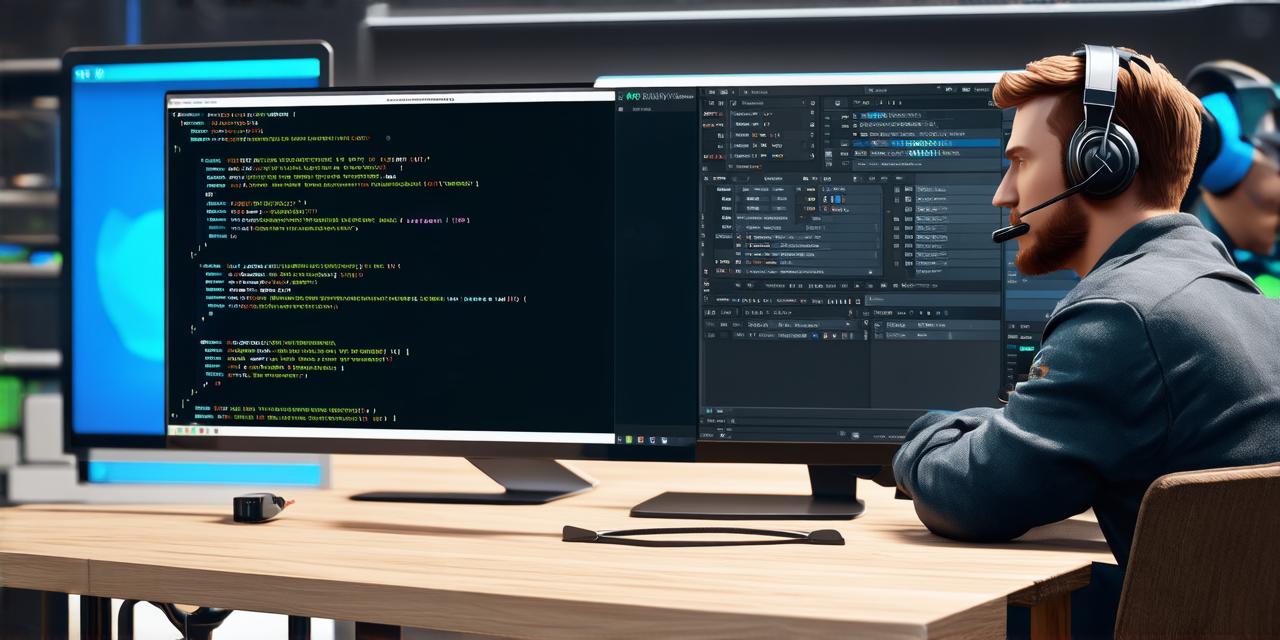Introduction:
The debate between Unity and Unreal Engine (URE) is ongoing among 3D developers. Both engines are powerful tools that can be used for a variety of purposes, including game development, virtual reality, augmented reality, and interactive experiences. However, there are some key differences between the two that make one more suitable for certain applications than others. In this article, we will explore the main features, strengths, and weaknesses of both engines and help you make an informed decision about which one to choose for your 3D development needs.
Main Features and Strengths:
Unity:
- Ease of use: Unity is considered one of the most user-friendly game engines in the market. It has a drag-and-drop interface that allows users to build their projects without writing any code, making it an ideal choice for beginners.
- Cross-platform compatibility: Unity supports a wide range of platforms, including Windows, macOS, iOS, Android, and consoles like PlayStation 4 and Xbox One. This means you can develop once and deploy your game or app on multiple devices with ease.
- Asset store: Unity has an extensive asset store that offers pre-built assets, plugins, and tools that can help speed up development and save time. These assets range from simple 3D models to advanced AI systems and physics engines
- Large community support: Unity has a large and active community of developers who contribute to the engine’s growth by creating new tools, assets, and tutorials. This makes it easy to find help and support when needed.
Unreal Engine:
- High-performance graphics: URE is known for its high-quality graphics capabilities, thanks to its use of Blueprint visual scripting and advanced lighting and post-processing effects. This makes it a popular choice for developers who require realistic and stunning visuals.
- Advanced physics engine: URE has a powerful physics engine that allows for complex simulations and interactions between objects in the scene. This is particularly useful for developing realistic character movements, vehicle physics, and other types of interactive experiences.
- Virtual production capabilities: URE offers advanced virtual production tools that allow developers to create high-quality content for film and television. These tools include support for real-time rendering, motion capture, and advanced lighting and camera systems
- Advanced AI capabilities: URE has built-in support for machine learning and artificial intelligence, making it easy to develop intelligent agents and other types of interactive experiences.
Weaknesses:
Unity:
- Limited scripting capabilities: While Unity’s visual scripting system is powerful, it may not be suitable for developers who require more advanced scripting capabilities or those who prefer to work with code.
- Performance issues on high-end devices: Unity can struggle with performance issues on high-end devices, particularly when running complex graphics and physics simulations.
- Limited support for VR development: While Unity does support virtual reality (VR) development, it may not be as advanced or optimized as other engines like URE.
Unreal Engine:
- Steep learning curve: URE has a steep learning curve due to its advanced features and complex scripting requirements. This can make it challenging for beginners to get started with the engine.
- High system requirements: URE requires powerful hardware to run smoothly, which can be a barrier for many developers who may not have access to high-end machines.
- Limited cross-platform support: While URE does support multiple platforms, it may not be as widely compatible as Unity. This can make it more difficult to develop for certain devices or platforms.
Case Studies:
“The Last of Us”: The popular video game was developed using Unity, showcasing the engine’s ease of use and cross-platform compatibility.
“Fortnite”: Epic Games, the company behind Fortnite, used URE for its advanced graphics and physics capabilities.





